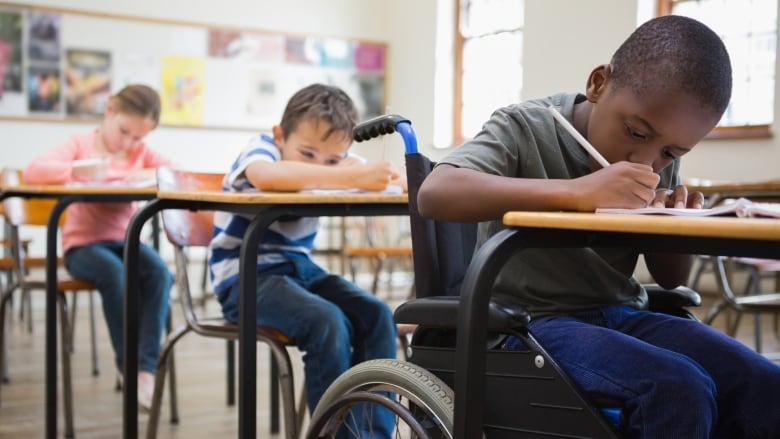From gender identity to family income, student census a wealth of data for local school boards
Data will help provide more personalized, precise programming says Catholic board

The two largest school boards in Waterloo region now have a mountain of data on their students that hasn't existed before thanks to mandated censuses.
Ontario's Ministry of Education has mandated school boards across the province must each do a student census. It must be completed by 2023 and participation by parents and students is voluntary.
Both the Waterloo Region District School Board and the Waterloo Catholic District School Board released their census data results this week and it provides a better picture of who is attending local schools.
"This data that we now have allows us to be even more precise in thinking about what are the types of supports that we need to be able to better serve students," jeewanchanicka, director of education for the Waterloo Region District School Board, told CBC News.
Loretta Notten, director of education for the Waterloo Catholic District School Board, said that board also did a staff census, so the student census is an "important companion" to that.
"The student census data first provides us a snapshot of how our students identify and the degree to which they feel they belong and are well served in their school communities," Notten said in a statement.
"Secondly, we can use this data to further explore which identified populations may require new or differentiated approachesin order to more fully succeed in our system."
She said this will allow the board to provide"for more personalized and precise programming."
The French-language boards in Waterloo region Conseil scolaire Viamonde and Conseil scolaire catholique MonAvenir are now conducting their censusesand results will be available in the fall.
The Wellington Catholic District School Board conducted its census survey in April. The Upper Grand District School Board says it plans to launch its censusthis fall.
A look at the numbers
The public school board it had a 40 per cent completion rate for the families of students in Kindergarten to Grade 3; while 50 per cent of students in Grades 4 to 12 took the survey. The Catholic board had a71.6 per cent response rate.
More than 60 per cent of students inboth school boards said they were Caucasian.
The school boards did not always ask the same questions of parents and students. For example, questions differed on gender identification and sexual orientation.
The Catholic board asked students what their gender was at birth:
- 49.6 per cent said male
- 49 per cent said female.
- 1.3 per cent was a mix of "I am not sure," "I do not understand the question" and "I prefer not to answer."
Students were then asked if they identify as that gender now:
- 94.8 per cent said yes.
- 2.5 per cent said no.
- 1.3 per cent said "I am not sure."
- 1 per cent said "I prefer not to answer."
- 0.4 per cent said they did not understand the question.
Students who answered no were then asked how they identify.
As well, the board asked students from Grades 7 to 12 "are you straight? (i.e. heterosexual)?
The public board broke down gender identity based on who answered: For students in Kindergarten to Grade 3, when parents answered the question,and Grades 4 to 12, when students answered.
Kindergarten to Grade 3:
- 51 per cent male.
- 49 per cent female.
- 0.6 per cent LGBTQ.
The numbers for Grade 4 to 12 showed 4.4 per cent of students self-identified as an LGBTQ+ gender:
- 50 per cent female.
- 46 per cent male.
- 1.9 per cent non-binary.
- 1.1 per cent gender fluid
- 0.8 per cent transgender.
Other responses included genderqueer, gender non-conforming, intersex, two-sprit, questioning, demigender or gender not listed.
Rather than asking "are you straight?" the Waterloo Region District School Board offered 12 options for students to choose from, one of which was "sexual orientation not listed."
Students were also asked about what challenges they face in terms of disabilities or health concerns. In the Catholic board, 47.1 per cent said they did not face any challenges and 17 per cent said they either preferred not to answer or didn't know.
For the public board:
- 83.6 per cent said they did not face any challenges.
- 7.3 per cent said they did.
- 9.1 per cent said they were not sure.
For those who did say they faced challenges:
The census data also looked at students' access to food and nutrition at home, the size of their families and household income as well as whether they accessed various programs or services in the community or had part-time jobs.
- The Waterloo Region District School Board report can be found here.
- The Waterloo Catholic District School Board report can be found here in the agenda for Monday's board of trustees meeting. The report begins on page 28.












_(720p).jpg)


 OFFICIAL HD MUSIC VIDEO.jpg)
.jpg)



























































































